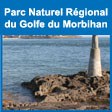5.6 Parc Naturel Régional du Golfe du Morbihan

 Site description
Site description
The Golfe du Morbihan is located in south Brittany, in the Morbihan Department. The boundary of the case study site is the Parc Naturel Régional du Golfe du Morbihan. The area includes 30 municipalities and an associated marine area of 125 km2. This marine area is connected to the Atlantic Ocean by a narrow channel. The Golfe du Morbihan is famous for its large richness of biodiversity, natural and cultural heritage, with various habitats (mudflats, rocky foreshores, seagrass beds, etc.) and landscape. The population is about 166 000 inhabitants and it has multiplied by a factor of eight in the last forty years. Many professional and leisure activities coexist and include shellfish farming, fishing, tourism, sailing etc. The pressure for living-space for people and space for commercial activity impacts on the natural environment, both terrestrial and marine.
[ Find out more about the case study site ... ]
Focus of study
Seagrass beds are sensitive to pressures impacting environment quality (e.g. lack of light, herbicides, trampling, grubbing, etc.). Due to their high ability to regenerate in a healthy environment, they are used as a water quality indicator for the European Water Framework Directive. In order to reconcile the environmental conservation with activity development of activities, the Regional Natural Park decided to experiment the Ecosystem Services Approach put forward in the VALMER project. The Ecosystem Services Approach was designed to:
- raise awareness on seagrass issues
- improve the management of seagrass beds through an integrated assessment
- identify management options to facilitate trade-offs.
[ Find out more about the focus of study ... ]
Key stakeholders and their involvement
The Parc Naturel Régional du Golfe du Morbihan has developed a broad and participative approach to gather all the stakeholders concerned by the conservation of seagrass beds: elected members, professional representatives, NGOs, recreational activities, citizens, scientists, managers, etc.
[ Find out more about key stakeholders and their involvement ... ]
Approach for Ecosystem Services Assessment
Combination of assessment methods: interviews, workshops, focus groups, conceptual modelling, development of knowledge integration and sharing platform and choice experiments surveys.
[ Find out more about the Ecosystem Services Assessment ... ]
Summary of main results
The assessment results and the approach were shared with 112 persons during a “seagrass day” (December, 4th 2014). These results will be disseminated broadly.
[ Find out more about the main results ... ]
Use of results
We hope that the results will provide new ideas and information that could be used for the modification of the Plan for Sea Development (a maritime planning document) in 2016, in order to improve seagrass beds management without unnecessary constraints on activities.
Examples of lessons learned
- Different representations of seagrass beds between stakeholders
- Difficulty to involve stakeholders on one specific ecosystem service if there is no direct link with their activity
- Difficulty for some stakeholders to propose new ideas for management because they don’t want to be blamed for their implementation
- Maps are a good support for discussion and favours group dynamics
- Identification of knowledge gaps
- We have to manage differently Zostera marina and Zostera noltei
- We don’t manage directly the seagrass beds but the pressures set upon them
- Difficulty to create indicators of pressures (nature of pressures, lack of data and knowledge)
- Some natural factors are uncontrollable, and thus some people don’t understand why they should make efforts

